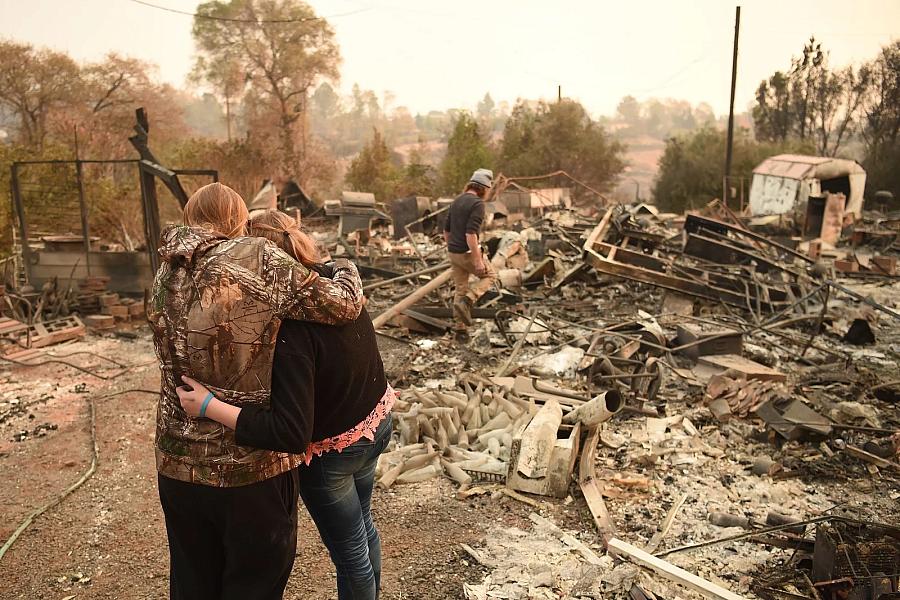Emergency communication void leaves fire survivors vulnerable to mental health issues

(Photo by Josh Edelson/AFP/Getty Images)
“Camp Fire created a black hole of communication,” that was the headline of the story about failures in emergency communication during the 2018 Camp Fire published in The Mercury News a month after the fire destroyed the town of Paradise and surrounding communities, killing 85 people. The Camp Fire’s destruction has had lasting effects on area residents, including on mental health. While these post-fire mental health issues are often attributed to the fire itself, they can also be attributed to the “black hole” in communication that happened during the fire.
Issues with emergency communication and evacuation during massive wildfires — such as the Camp and Tubbs fires — have been highly documented. So have the mental health issues that have plagued many who’ve survived such fires, but these two topics are rarely, if ever, linked. The high exposure many wildfire survivors have faced during the evacuation of a disaster is often due to inadequate or failing emergency communication systems, and this exposure is a predictor of mental health outcomes.
A recent study published in Frontiers in Public Health looked at psychological symptoms of those who evacuated from the 2016 Fort McMurray wildfires in Alberta, Canada. The study showed “that having witnessed houses being destroyed by the fire” was linked to having symptoms of generalized anxiety disorder and/or post-traumatic stress disorder. In addition, the study cites that “40% of individuals exposed to a natural disaster will develop stress-related or adjustment disorders.”
Many Butte County residents are suffering from mental health issues that get “triggered” every fire season. This triggering can be from the smell of smoke to the sight of flames on television to a lack of electricity due to recurring PG&E power shut-offs to prevent more fires.
Berry Creek resident Misty Mcdivitt said she noticed this type of triggering after residents in her community experienced the Bear Fire, which took place in Butte County two years after the Camp Fire and killed 16 people. Mcdivitt said she received no evacuation order during the fire. In interviews with North State Public Radio, many other residents said a power shut-off event was occurring at the time of the fire, which left many without power for internet, TV, radio or cell phones. These issues with emergency communication left many evacuating at the last minute while embers and ash were falling upon them. Mcdivitt said the long-term impacts of the lack of communication and exposure were apparent during last year’s Dixie Fire, which was miles away from her community.
“There’s a Facebook group called Baldrock Talk and it got swarmed with so many PTSD posts, like everybody was just like freaking out like, ‘Do I need to pack my stuff? Or how close is the fire? Does anybody see anything?’ It was just like constant worrying, and like everybody was just scared,” Mcdivitt said. “It’s just really sad to see everybody is so triggered by everything.
This series will examine the public’s trust in emergency communication systems in Butte, Plumas and Shasta counties, which have experienced large catastrophic wildfires, and how a lack of trust — especially after being exposed to wildfire — affects mental health.
I’ll be speaking with wildfire survivors, mental health professionals, officials responsible for emergency communication in these counties, as well as emergency communication researchers.
The long-term goal is to make people aware that many counties — even those that have experienced fires — are possibly still unprepared for future ones, and that robust emergency communication systems are critical for public health to prevent death, injury and chronic long-term mental health issues. My hope is that this project creates policies that would help support low-income, rural areas to create more robust emergency communication systems. The ultimate goal is for residents in these areas to no longer have to suffer from as much stress and worry each fire season, and that fewer or no people are injured or die in wildfires in these areas due to inadequate or failing emergency communication systems.

